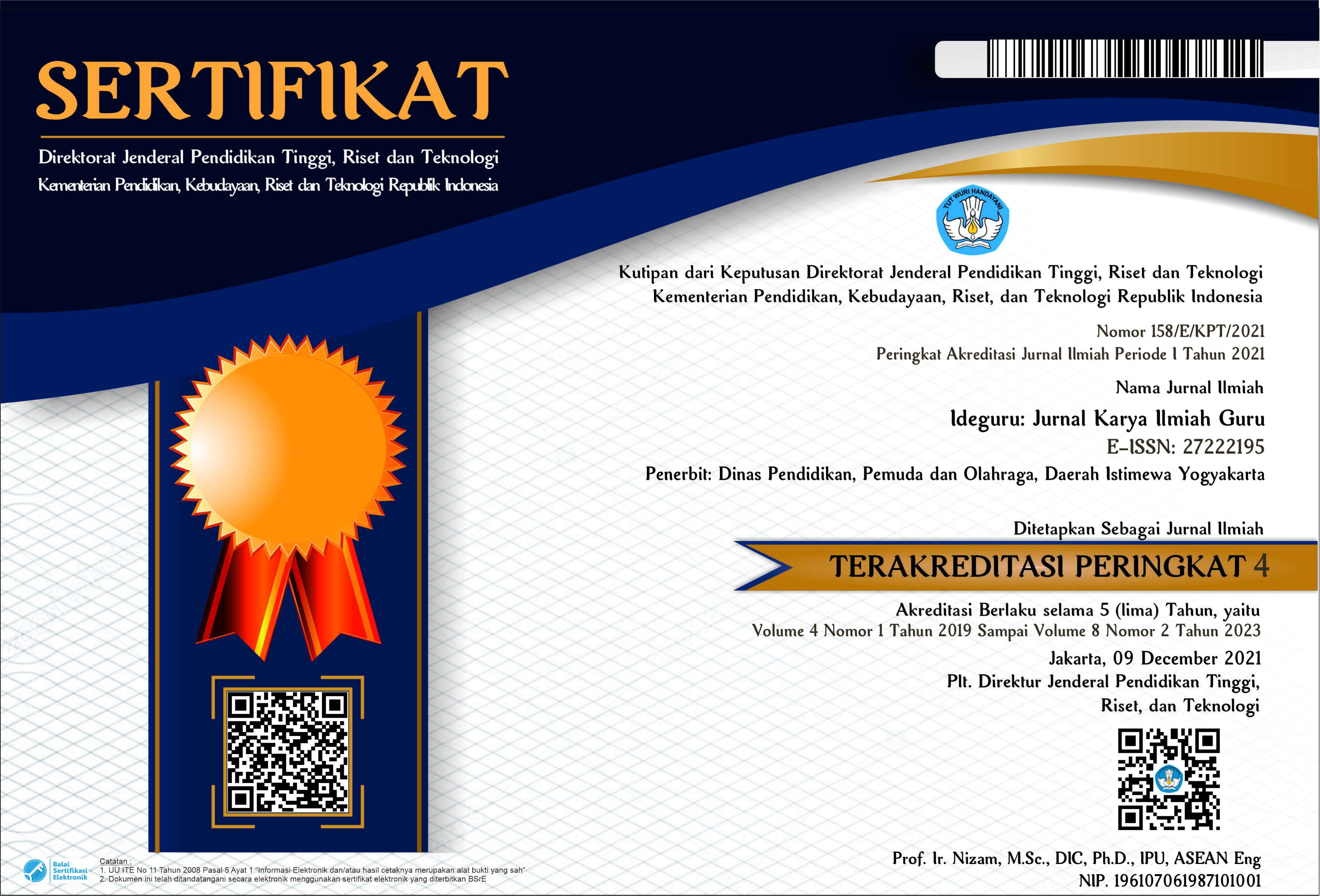Study of the Shape, Function and Meaning of the Character of Punakawan Postage Yogyakarta Style
Abstract
The purpose of this research is to understand the make up character of Punakawan Yogyakarta in terms of form, function, and meaning in Javanese cultural traditions. The existence of make up has an important meaning for people who struggle in character make up for the performing arts because it relates to special forms of make up in which there are special rules and regulations. The form of make up of Punakawan figures has the characteristics of the diversity of make up techniques and characters that have a function and symbol of meaning in the values of learning noble ethical character. This research uses interpretive model data analysis through literature studies, field studies and in-depth interviews to wayang experts with an aesthetic approach to be able to explain the shape, function, and meaning of Punakawan figure make up. The results showed that the forms of make up on the character of the punakawan have a characteristic on each Punakawan figure (Semar, Petruk, Gareng, Bagong) describing the character and nature of the figures who each have the function and meaning of Javanese cultural philosophy.
PDF Downloads
Copyright (c) 2022 Dwi Ermavianti Wahyu Sulistyorini

This work is licensed under a Creative Commons Attribution 4.0 International License.

 DOI:
DOI:














